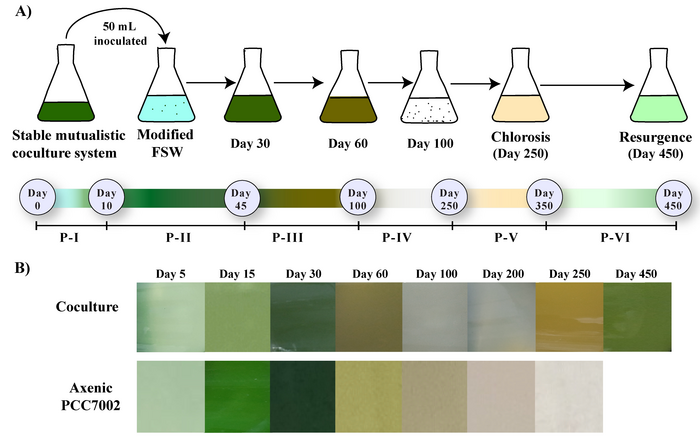A phytoplankton almost as old as Earth — about 3 billion years compared to the planet’s 4.5 billion years — still holds secrets, including how it can survive starvation in the most nutrient-deficient oceans. Synechococcus is the most geographically diverse of three phytoplankton species contributing a quarter of the oceans’ primary production, appearing in both frigid polar waters and warm tropical seas.

Credit: Shailesh Nair
A phytoplankton almost as old as Earth — about 3 billion years compared to the planet’s 4.5 billion years — still holds secrets, including how it can survive starvation in the most nutrient-deficient oceans. Synechococcus is the most geographically diverse of three phytoplankton species contributing a quarter of the oceans’ primary production, appearing in both frigid polar waters and warm tropical seas.
Now, researchers from the Qingdao Institute of Bioenergy and Bioprocess Technology (QIBEBT), Chinese Academy of Sciences (CAS), may have discovered who to thank for the phytoplankton’s persistent existence: heterotrophic bacteria.
In a series of multi-year experiments, the team found that Synechococcus and the bacteria that feed on them may have an inherent tendency toward mutualism and will undergo significant changes to encourage each other’s survival. The marine algae Synechococcus and its associated heterotrophic bacterial community have an inseparable close relationship.
Their findings were published on Sept. 30 in Science Advances.
Previous studies include one in which the phytoplankton and its bacterial community thrived for more than two years without any external nutrient support. According to Prof. ZHANG Yongyu from QIBEBT, these results hint at microbial interactions that may sustain long-term Synechococcus growth, but only in controlled and consistent experimental circumstances.
However, unlike laboratory culture systems, the ocean is not static and experiences changes in environmental factors such as nutrients. “This study was carried out to understand how changes in environmental factors, such as the availability of external nutrients, will influence the mutualistic relationship between the Synechococcus and heterotrophic bacterial community,” said corresponding author Prof. ZHANG.
Mimicking the change in marine environment, the researchers supplied sterile inorganic nutrients to the established mutualistic coculture of Synechococcus and a diverse bacterial community from their previous study. The two-year-old stable and mutually beneficial relationship buckled but did not break.
“Our findings suggest that the availability of external nutrient sources disrupts the established mutualism, leading to the collapse of Synechococcus health,” said co-first author Shailesh Nair, postdoctoral scholar at QIBEBT. “However, once the external nutrients were exhausted, over the next 450 days, Synechococcus and heterotrophic bacteria gradually re-established their metabolic mutualism under long-term coexistence that revived Synechococcus health.”
Through genetic analysis and tracing the nitrogen in the system, the researchers determined that the bacteria facilitated nitrogen fixation, converting nitrogen for use in buoying the phytoplankton, which triggered the re-established mutualism.
“During the process, bacterial community structure and functions underwent tremendous adjustments to achieve the driving effect, and the bacteria’s cogeneration of nitrogen, phosphorus, iron and vitamin B12 sustained Synechococcus‘s prolonged healthy growth,” said co-first author ZHANG Zenghu, associate professor at QIBEBT.
These findings suggest that Synechococcus and heterotrophic bacteria may have an inherent tendency towards mutualism, which can be re-established after environmental interference. This natural, recurrent trait of Synechococcus and heterotrophic bacteria may exhibit their co-evolutionary adaptations in nutrient-deficient environments for survival.
While the researchers said they believe this study answered the longstanding question about the tenacity of Synechococcus, they now have several more questions they plan to answer.
“Does this inherent mutualistic relationship apply to other algae as well?” ZHANG Yongyu asked. “Can we boost algal growth by artificially constructing algal-friendly microbial communities? The potential regulation of algae-bacteria interactions may offer a novel way to increase algae-driven marine carbon sequestration.”
The study was supported by the National Key Research and Development Program of China, the National Natural Science Foundation of China and the CAS Center for Ocean Mega-Science.
Journal
Science Advances
DOI
10.1126/sciadv.abf4792
Article Title
Inherent tendency of Synechococcus and heterotrophic bacteria for mutualism on long-term coexistence despite environmental interference
Article Publication Date
30-Sep-2022




